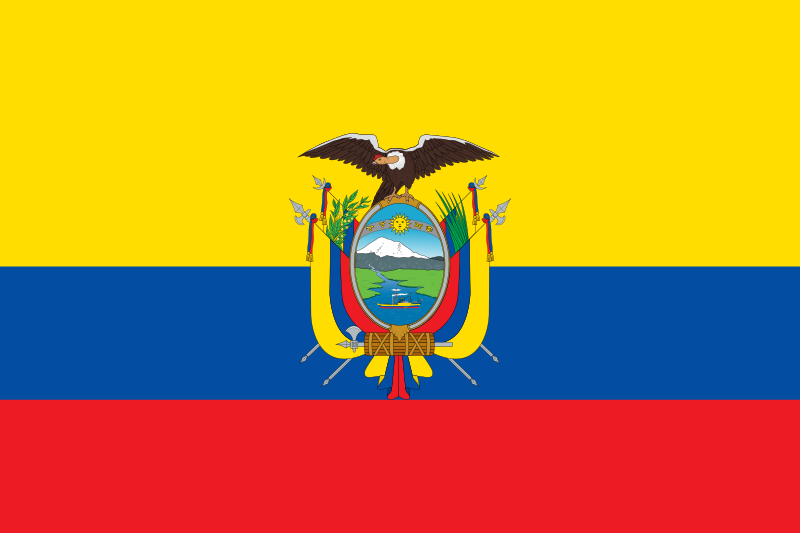Every school holds a formal ceremony called Juramento a La Bandera ("Swearing to the flag"). During the ceremony, the students in the oldest grade swear allegiance to the flag. Various speakers explain the significance of each color band. Take note that the yellow band on the flag is twice as wide as the other ones.
Yellow represents the country's natural wealth. Blue represents the ocean (and the sky). Red represents the blood and sacrifices made in the country's fight for freedom.

In the weeks leading up to the ceremony, the students practice marching so that they can get the steps down in time for the big day. And the job of holding the flag is a coveted one. The responsibility is given to the student with the highest grades (a kind of valedictorian, if you will).

Now, to finish the narrative of the Ecuadorian flag. If you look at the official flag, it doesn't just contain the three color bands. It also has a seal in the middle. This was added in the year 1900. To my knowledge, there is no holiday to commemorate the adoption of the seal on the flag.
If the Ecuadorian flag reminds you of the Colombian or Venezuelan flags, that is because they are based on the same design. After Simon Bolivar led the revolutions in South America, the three countries all belonged to the Gran Colombia. As an homage to the revolutionaries who inspired the struggle for independence, the countries adopted designs similar to the flag of Gran Colombia. The differences between the three are that the Ecuadorian flag has the seal of arms, the Venezuelan flag has stars, and the Colombian flag just has the tricolor bands.
No comments:
Post a Comment